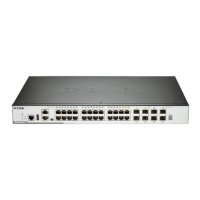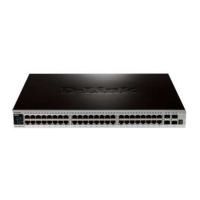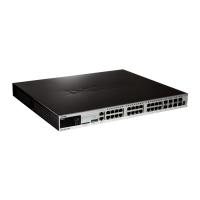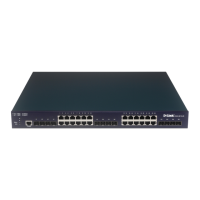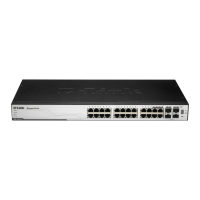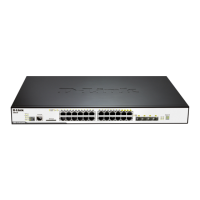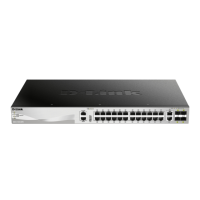DGS-3630 Series Layer 3 Stackable Managed Switch Web UI Reference Guide
208
Parameter Description
Unit
Select the Switch unit that will be used for this configuration here.
From Port - To Port
Select the appropriate port range used for the configuration here.
Port VLAN
Select this option to enable or disable sending the port VLAN ID TLV. The Port
VLAN ID TLV is an optional fixed length TLV that allows a VLAN bridge port to
advertise the port VLAN ID (PVID) that will be associated with untagged or priority
tagged frames.
Protocol VLAN
Select this option to enable or disable sending the Port and Protocol VLAN ID
(PPVID) TLV. Enter the VLAN ID in PPVID TLV.
VLAN Name
Select this option to enable or disable sending the VLAN name TLV. Enter the ID
of the VLAN in the VLAN name TLV.
Protocol Identity
Select this option to enable or disable sending the Protocol Identity TLV and the
protocol name. Options for protocol name to choose from are None, EAPOL,
LACP, GVRP, STP, and All.
Click the Apply button to accept the changes made.
LLDP Dot3 TLVs Settings
The LLDP Dot3 TLVs Settings page is used to enable or disable outbound LLDP advertisements for IEEE 802.3
organizationally unique TLVs.
To view the following window, click L2 Features > LLDP > LLDP Dot3 TLVs Settings, as shown below:
Figure 5-100 LLDP Dot3 TLVs Settings Window
The fields that can be configured are described below:
Parameter Description
Unit
Select the Switch unit that will be used for this configuration here.
From Port - To Port
Select the appropriate port range used for the configuration here.
MAC/PHY
Configuration/Status
Select this option to enable or disable the MAC/PHY Configuration/Status TLV to
send. The MAC/PHY Configuration/Status TLV is an optional TLV that identifies
(1) the duplex and bit-rate capability of the sending IEEE 802.3 LAN node, and (2)
the current duplex and bit-rate settings of the sending IEEE 802.3 LAN node.
Link Aggregation
Select this option to enable or disable the Link Aggregation TLV to send. The Link
Aggregation TLV indicates contains the following information. Whether the link is
capable of being aggregated, whether the link is currently in an aggregation, and
the aggregated port channel ID of the port. If the port is not aggregated, then the
ID is 0.
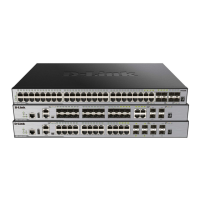
